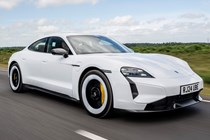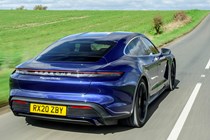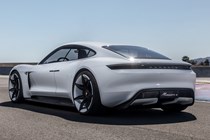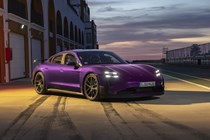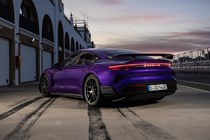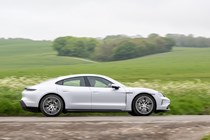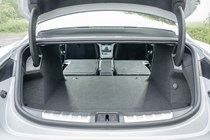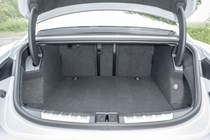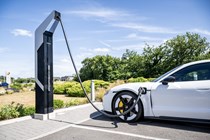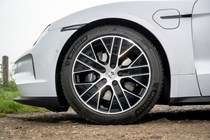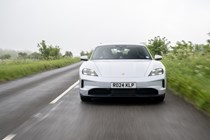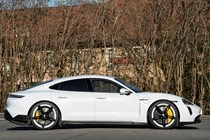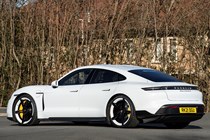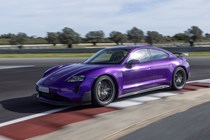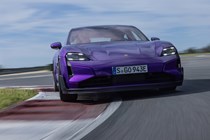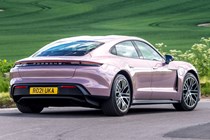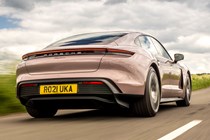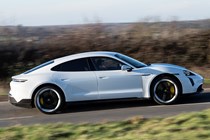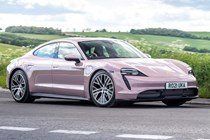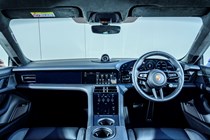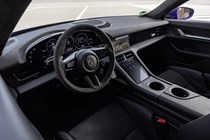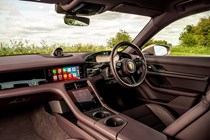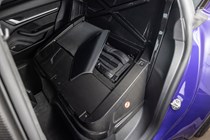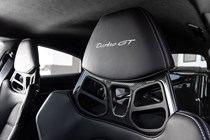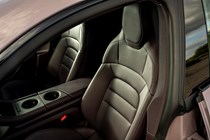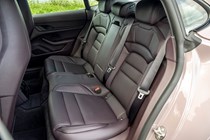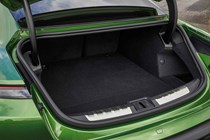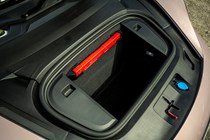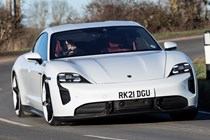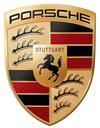
Porsche Taycan engines, drive and performance
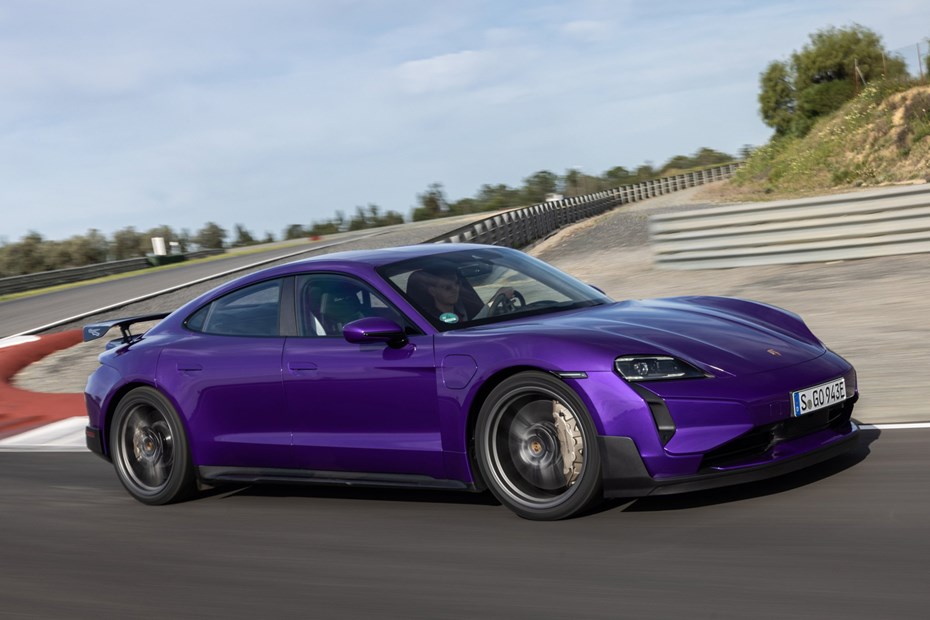
- Five variants on offer
- Pace ranges from brisk to bonkers
- 4S is the sweet spot
Electric motors
There are five versions of the facelifted Taycan to choose from starting with the base-model, single motor, rear-wheel-drive Taycan. All the other models have dual motors and all-wheel-drive – the Taycan 4S, Turbo, Turbo S and Turbo GT. What separates them is their massively different levels of performance.
Some people quite rightly point out the use of the term ‘turbo’ is erroneous – an electric car can’t be turbocharged. But the names line up with the performance scale on other Porsche models such as the Panamera and Cayenne.
Things start to get a bit confusing when we delve into each model’s power output. That’s because they have a standard horsepower rating but can access more with ‘overboost’ (another misnomer) that kicks in when using launch control for the fastest starts, and during hard acceleration – something that’s further enhanced in the latest models by the new ‘push-to-pass’ function. Activated by a button on the steering wheel, the feature summons a 10-second burst of maximum power, aiding overtaking.
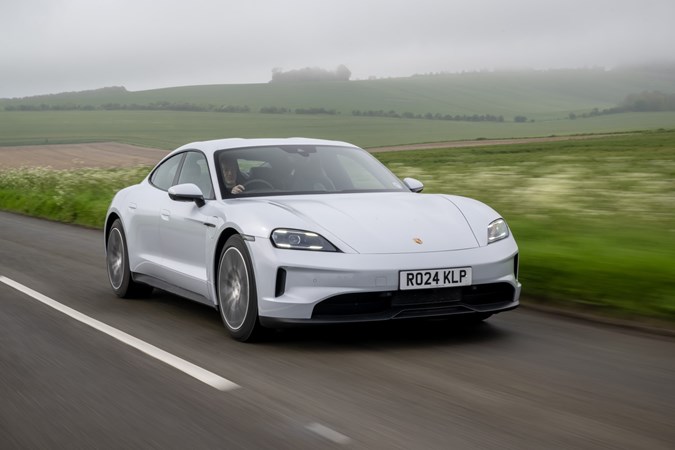
To add extra confusion, the Taycan and Taycan 4S are available with the optional Performance Battery Plus (PBP), which boosts horsepower over the standard battery in normal running and under overboost. The PBP is standard across the rest of the range.
Spec the PBP and the Taycan is boosted from 408hp to 435hp peak power, while the Taycan 4S output increases from 544hp to 598hp on overboost – or 462hp and 517hp without PBP. Before this starts making your – and our – head hurt, all you really need to know is that we found the Taycan is plenty quick enough for most people, with a 0-62mph time of 4.8 seconds and muscular motorway acceleration. But the 4S is arguably the sweet spot in the range – it’s fast enough to have fun without feeling bonkers.
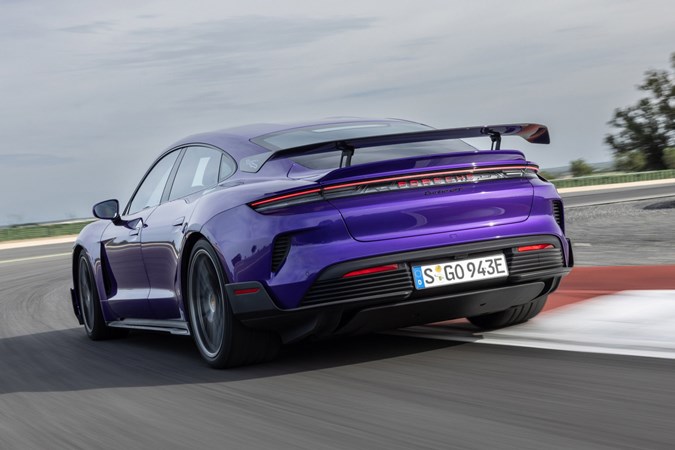
But this is Porsche, and bonkers is available if you want it. The Taycan Turbo has 707hp as standard, 884hp on overboost which delivers 0-62mph in 2.7 seconds. The Turbo S has 775hp/952hp, hitting the 62mph mark in 2.4 seconds.
Then there’s the Turbo GT, which was developed by the same team in Porsche responsible for the 911 GT3 and GT3 RS. It’s 70kg lighter than the Turbo S and has a whopping 1,108hp available, enough for a 0-62mph sprint in a frankly somewhat uncomfortable 2.3 seconds. Spec the optional Weissach package and acceleration is even quicker – 2.2 seconds to 62mph, just 6.4 second to 124mph. When we tried it on a race track, it was a physically visceral experience far removed from the realms of regular driving. Only the Tesla Model S Plaid is quicker to 62mph but loses out to the Taycan as speeds increase.
What’s it like to drive?
- Fast, fun, and highly capable
- Huge range of chassis tech
- Active Ride suspension especially clever
Porsche has thrown a huge amount of knowledge and technology at the Taycan in a bid to deal with the immense weight of its battery pack – most models weigh around 2.3 tonnes. All facelifted Taycans come with air suspension and adaptive dampers as standard; rear-wheel steering, torque vectoring and some very clever roll stablisation tech are also fitted to top-grade models, and available as an option on lesser ones.
Does it all work? Does it ever! The Taycan completely breaks the mould of EVs that are one-dimensional to drive. Yes, it’s heavy but you rarely actually feel the weight. It’s only during during a fast direction change or when dealing with big crests and compressions that you’re aware of the car’s mass. Lesser Taycans without all the clever tech aren’t quite as good at hiding their bulk, but we still think the Taycan in any form offers the very best driving experience of any EV.
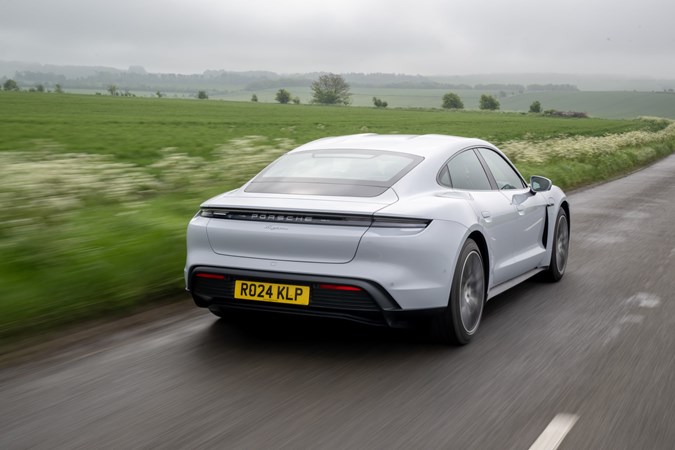
All-wheel-drive models have an enormous amount of traction off the line and out of corners. The electric motors on each axle and sophisticated torque vectoring mean the power goes exactly where it’s needed at any moment. Add in weighty, accurate – if not especially communicative – steering and we found you build a vast amount of confidence in the Taycan’s cornering ability, which allows to have more fun.
The rear-wheel-drive Taycan is cleverly set-up to prevent a tyre-smoking getaway, but you can still slide it about if you want – oversteer is easily accessible in any Taycan. We found it possible to make very rapid cross-country progress but, if anything, it doesn’t feel quite potent enough for the hugely capable chassis. We’d upgrade to at least the Taycan 4S to make the most of the car’s innate handling ability. That basic competence means the Turbo models can be preposterously fast point-to-point.
New chassis technology has been introduced with the facelift – Porsche Active Ride (PAR). It replaces the previous electromechanical anti-roll tech and uses pumps and motors to move the damper fluid around. It’s so effective that cars equipped with PAR do without conventional anti-roll bars entirely. What’s more, the system eliminates diving under braking, squatting under acceleration and it can even lean the car into corners.
In use, PAR can feel a bit odd to the enthusiastic driver, the car not quite behaving as you expect – a similar sensation to rear-wheel-steering. There’s a tiny learning curve, but after that you may not want to go back to conventional suspension. Even challenged by the huge performance of the Turbo GT – which gets PAR as standard – on a race track, the composure the system delivers in extremes is quite sensational.
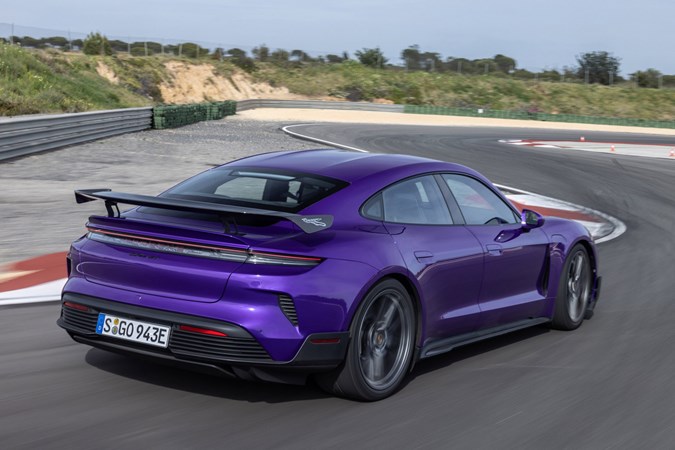
If you prefer a more authentic set of reactions from a car, though, you can turn PAR off by switching to the Sport or Sport Plus drive modes.
We’re less enamoured of the brakes. They mix regenerative and friction braking near-seamlessly on the road but become less consistent the faster you go. We found that to be especially true of the Turbo GT on a track. Under those admittedly extreme circumstances, the massive 10-piston calipers and ceramic discs activated the ABS more easily than is desirable, thanks in part to the softness and lack of feel in the left-hand pedal. Still, the Taycan has more natural-feeling brakes than pretty much every other EV we’ve tested.
Despite our minor reservations, no other EV comes close to matching the Taycan’s driving experience. Indeed, few saloons of any sort do. It offers the ride comfort of a limo with the precision, control and engagement of a serious sportscar. If you want the ultimate EV to drive, this is it.


